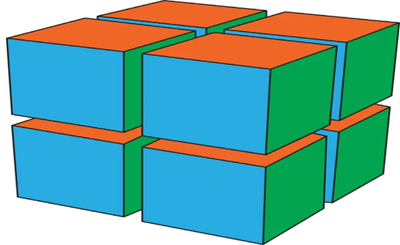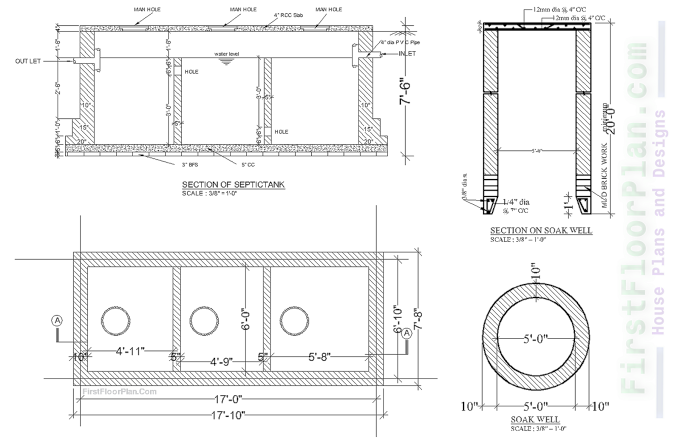A commonly used unit in the US and other nations uses the imperial system of measurement. The cubic foot is a mathematical unit used to calculate volume in cubic feet. A variety of objects, including rooms, shipping containers, and water tanks, are commonly measured in cubic feet.
We will go over the fundamentals of the cubic foot in this post, along with computations. Furthermore, in this article, the basic definition of the real-life application of cubic, and with the help of examples article will be explained.
Definition of Cubic Feet
The term "cubic measurement" refers to a three-dimensional volume measurement. It is simple to convert a cubic measurement from another unit to cubic feet. In a few easy steps, you can easily determine the volume of popular structures like cylinders and rectangular prisms.
Simply multiply the area of the base by the height to determine the volume of any space, such as a bedroom or post hole, or solve a math issue. Also, take note that feet3 can be used to denote cubic feet.
Applications of Cubic Feet in re Real-Life
These are just a few examples of how cubic feet are applied in real-life scenarios. Its versatility in measuring volume makes it valuable across various industries and everyday situations. Cubic feet is a unit of volume mostly used to measure the capacity or size of objects or spaces. Here are some real-life applications of cubic feet:
Cubic feet are frequently used in architecture and construction to determine the volume of materials such as concrete, lumber, or gravel needed for a project. It helps estimate the amount of space required for construction materials, as well as the capacity of rooms, buildings, or storage areas.
Shipping and Freight:
Cubic feet are used in the transportation industry to calculate the volume of cargo that can be loaded onto trucks, ships, or containers. Freight charges may be based on the cubic footage of the goods being shipped.
Moving and Storage:
When relocating or using storage services, cubic feet are often used to determine the amount of space required for belongings. Moving companies or storage facilities may charge based on the cubic footage of the items being transported or stored.
HVAC system:
HVAC systems require an understanding of cubic feet to determine the appropriate capacity for heating or cooling a space. By calculating the cubic footage of a room or building, HVAC professionals can determine the right-sized units and ensure efficient temperature control.
Cubic feet are utilized in the design and sizing of packaging materials, such as boxes or crates, to accommodate the volume of the contents. It helps ensure efficient use of space and protects the goods during transportation.
Aquariums and Fish Tanks:
Cubic feet are used in determining the size and capacity of aquariums and fish tanks. It helps in selecting the appropriate tank size for the species of fish, considering their space requirements, and ensuring their well-being.
How to find Volume in Cubic Feet?
A cubic feet calculator could be used for finding volume in cubic feet with steps. Here are a few examples to find volume in cubic feet manually.
Example 1:
Evaluate the volume in the Cubic Feet of a rectangular water tank its length is 7 ft, width is 4 ft and height is 10 ft.
Solution
Step 1:
Write the date carefully from the given condition for rectangular water.
l = length = 7 ft, w = width = 4 feet, h = height = 10 feet, Cubic feet (Ft3) =?
Step 2:
Write the formula of the cubic feet to find the volume of the rectangular tank.
Cubic Ft (Ft3) = length (Ft) × width (Ft) × height (Ft)
Cubic Ft (Ft3) = l (Ft) × w (Ft) × h (Ft)
Step 3:
Putting all values in the formula of “step 2” and simplifying.
Cubic Ft (Ft3) = l (Ft) × w (Ft) × h (Ft)
Cubic Ft (Ft3) = 7 (Ft) × 4 (Ft) × 10 (Ft)
Cubic Ft (Ft3) = 280 Ft3
Example 2:
Evaluating the volume in the Cubic Feet of a cylindrical gas tank whose radius of the base is 5 ft and the height of the cylinder is 9 ft.
Solution
Step 1:
Write the data carefully of the cylindrical gas tank from the question.
r = 5 ft, h = 9 ft, Cubic Ft (Ft3) =?
Step 2:
Write the formula of the cubic feet for the cylindrical tank.
Cubic Ft (Ft3) = π × (radius²) (Ft) × Height (Ft)
Cubic Ft (Ft3) = π × (r²) (Ft) × h (Ft)
Step 3:
Put the values in the above formula and simplify carefully.
r = 5 ft, h = 9 ft.
Cubic Ft (Ft3) = π × (r²) (Ft) × h (Ft)
Cubic Ft (Ft3) = 3.14 × (5 Ft) ² × 9 Ft
Cubic Ft (Ft3) = 141.3 Ft³
Example 3:
Determine the volume in cubic feet if the black hardboard has a width is 48-inch, a length of 96 inches, and a height of 24 inches.
Solution
Step 1:
Write the data from the given question and convert the unit into feet.
l = 48-inch, W = 96-inch, h = 24-inch
l = 48/12 ft, W = 96/12 ft, h= 24/12 ft
l = 4 ft, W = 8 ft, h = 2 ft
Step 2:
The formula for cubic feet is given below
Cubic Ft (Ft3) = l (Ft) × w (Ft) × h (Ft)
Step 3:
Put the values in the above formula and simplify carefully.
Cubic Ft (Ft3) = l (Ft) × w (Ft) × h (Ft)
Cubic Ft (Ft3) = 4 (Ft) × 8 (Ft) × 2 (Ft)
Cubic Ft (Ft3) = 64 Ft3‑
Summary:
In this article basic definition of cubic feet' real-life application and for better understanding with the help of examples topic is explained. I hope that anyone can easily defend this topic after a complete understanding of this article.












%20House%20plan%20with%207%20storey%20Apartmen%20building%20Structural%20desing%20%20DWG%20&%20PDF.jpg)


